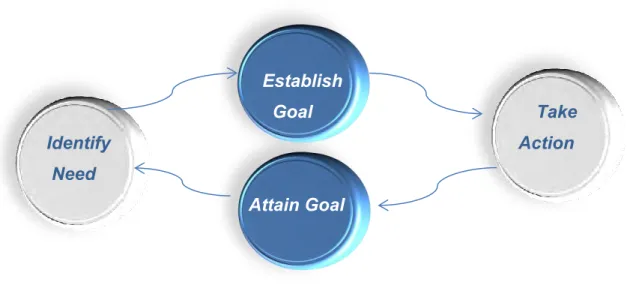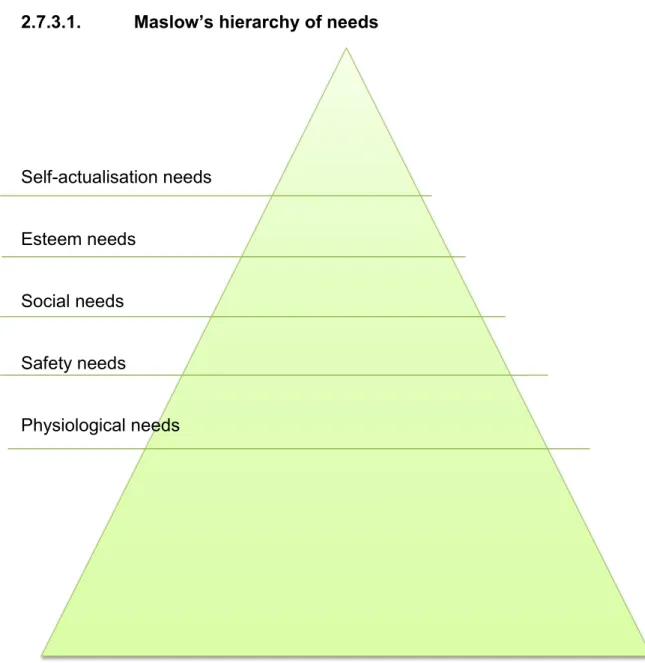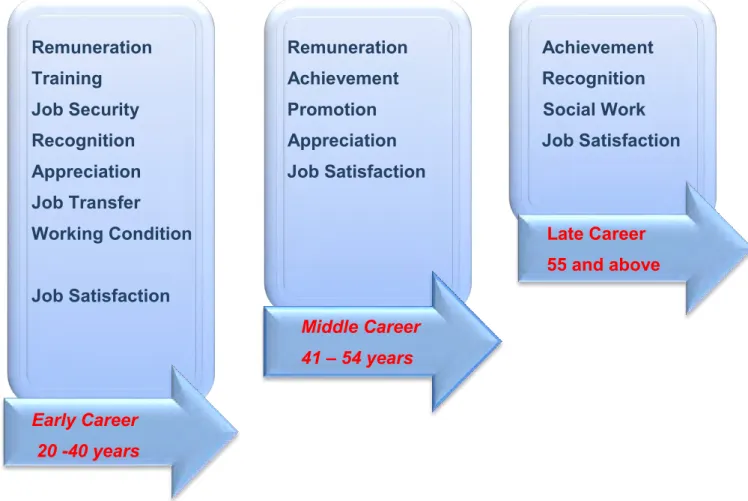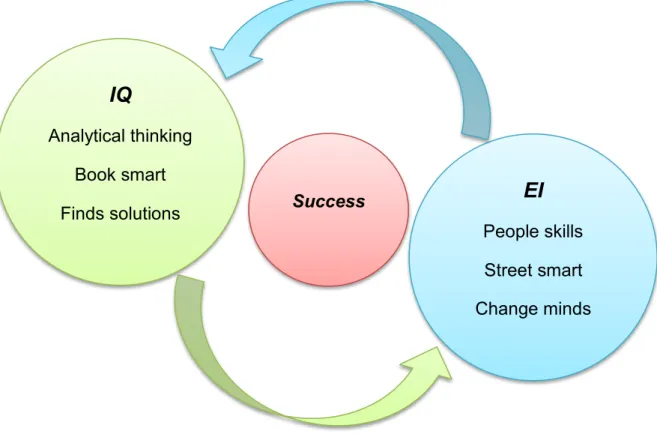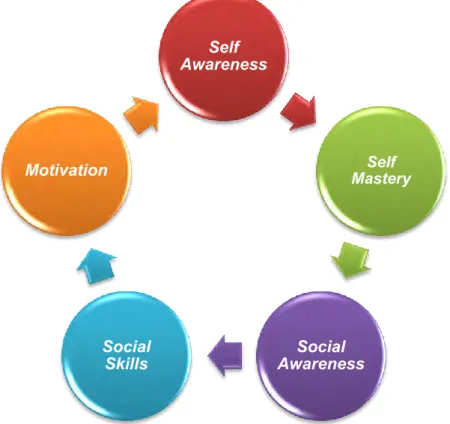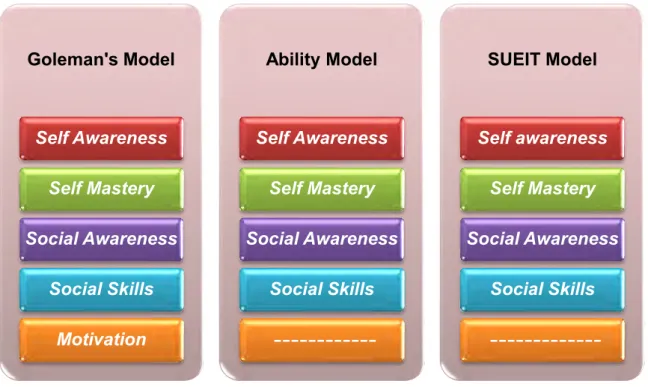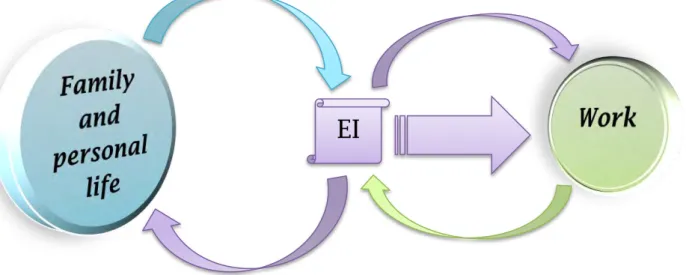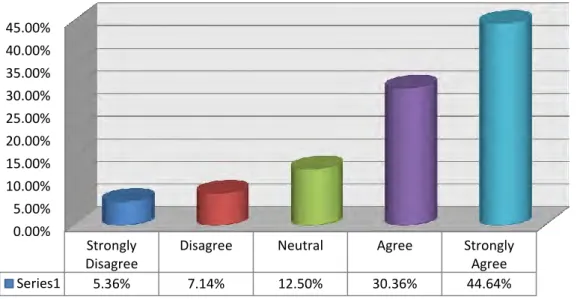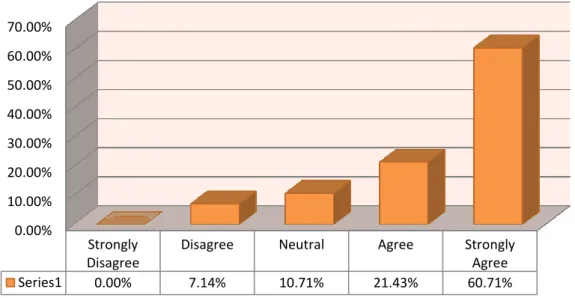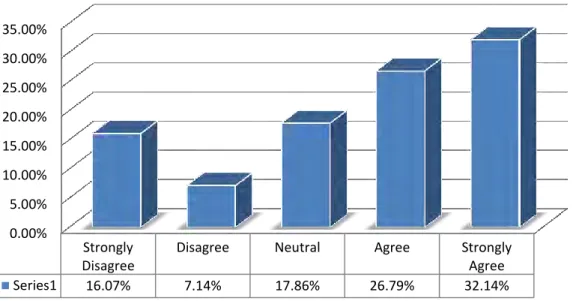i | P a g e UNIVERSITY OF KWAZULU-NATAL
The impact of emotional intelligence on employee motivation in the construction sector
By
Ridwan Essop
Student Number: 212 561960
A dissertation submitted in partial fulfillment of the requirements for the degree of
Master of Business Administration
College of Law and Management Studies Graduate School of Business & Leadership
Supervisor: Dr. Muhammad Hoque
2015
ii | P a g e Declaration
I hereby confirm that this research has not been previously submitted for any degree and is not currently being submitted by any candidates.
I hereby confirm that this dissertation has not been submitted for any degree or examination at any other institute.
I hereby declare that this dissertation contains my own work unless where it has been specifically acknowledged.
……….
Ridwan Essop
Student no. 212 561 960
………
Date
iii | P a g e Acknowledgements
(i) Foremost, I would like to thank my wife for always motivating me and our four children for always testing and developing my emotional intelligence.
(ii) I would like to sincerely thank my supervisor Dr Hoque for his insightful guidance and support throughout the MBA programme.
(iii) I would like to thank Apex Asphalt management and staff for their support and co-operation during the survey.
(iv) I would like to thank my MBA group members and friends for life, Keith and Rajah for all those late nights, heated discussions and bunny chows. I think we unconventionally enjoyed the MBA programme.
(v) I would like to thank my mentors and managers over the last 18 years at Zetachem, Mr Peter Naidoo, Mr Richard Winter and Mr Bruce Thompson. A special thanks to Mr Bruce Thompson for his invaluable support over the period of my MBA. I truly appreciate it.
(vi) I would to thank Mr Preggie Reddy for his advice during this dissertation.
iv | P a g e Dedication
I dedicate this work to my wife who has encouraged and supported me over the last eighteen years of marriage.
v | P a g e Abstract
The construction sector in the South African economy has experienced a decline in growth since the economic boom due to FIFA 2010. The ripple effects of the electricity shortage which results in incessant electricity cuts are compounding the problems for the construction sector and other sectors in South Africa. These issues pose a serious threat to the existence of many organisations. In order to survive this phase, businesses need to explore unprecedented techniques to achieve competitive advantage. Arguably the ability of an organisation to generate wealth is determined by the efforts of its employees. Management need to explore new approaches to harness the resource of their human capital. Motivation is arguably the key to unleashing the human resources full potential. Emotional intelligence has been closely linked to the motivation of employees. This study focused on the factors of employee motivation and emotional intelligence and their interdependencies. A quantitative survey involving a sample of sixty employees, with fifty six actual respondents, from a construction company was conducted. The pertinent factors of employee motivation and emotional intelligence were identified based on a dissection of the levels of emotional intelligence and employee motivation. Age, marital status, tertiary education and authority were identified as salient categorical components that affected emotional intelligence and employee motivation. The predominant determinants discovered were remuneration, purposeful job and feeling of accomplishment. The total sample from the survey yielded a significant positive correlation between emotional intelligence and employee motivation at 0.732 (p <
0.01) and a co-efficient of determination of 0.5358. It was also subsequently discovered that there exists a more significant correlation between emotional intelligence and intrinsic employee motivation. These results suggested that the level of an individual’s emotional intelligence had greater dominance over intrinsic employee motivation than on extrinsic employee motivation.
vi | P a g e Table of contents
Title Page i
Declaration ii
Acknowledgements iii
Dedication iv
Abstract v
Table of contents vi
List of figures xi
List of tables xiv
CHAPTER ONE 1
INTRODUCTION 1
1.1. Introduction 1
1.2. Problem statement 2
1.3. Objectives of the study 2
1.4. Research questions 3
1.5. Significance of the study 3
1.6. Outline of the study 4
1.7. Summary 5
vii | P a g e
CHAPTER TWO 6
LITERATURE REVIEW 6
2.1. Introduction 6
2.2. Complexity of employees 7
2.3. Employee motivation in South Africa 8
2.4. Antecedents of motivation theory 8
2.5. Definitions of employee motivation 9
2.6. Types of Motivation 9
2.7. Motivational Theories 10
2.7.1. Instrumentality Theory 10
2.7.2. Reinforcement Theory 10
2.7.3. Content / Needs Theory 11
2.7.3.1. Maslow’s hierarchy of needs 12
2.7.3.2. Alderfer’s ERG theory 13
2.7.3.3. Hertzberg’s motivator-hygiene theory 14
2.7.3.4. McClelland’s theory of needs 14
2.7.4. Process/Cognitive Theory 15
2.7.4.1. Vroom’s Expectancy Theory 15
2.7.4.2. Adam’s Equity Theory 16
2.7.4.3. Goal-setting theory 17
2.8. Determinants of motivation using the Life Stage Model 18
2.9. Why measure employee motivation? 20
2.10. How to measure employee motivation? 20
2.11. Summary on employee motivation 21
2.12. Emotional Intelligence 22
viii | P a g e
2.13 What is Emotion? 23
2.14 What is intelligence? 24
2.15 Antecedants of Emotional Intelligence – two decades 24 2.16 Emotional intelligence and Intelligence Quotient (IQ) 26
2.17. The emotional mind versus the rational mind 27
2.17. The models of emotional intelligence 27
2.17.1. Goleman’s model of emotional intelligence 27
2.17.2. Ability Model of emotional intelligence 29
2.17.3. SUEIT Model of emotional intelligence 29
2.18. Summary on the models of emotional intelligence 31
2.19. The case for emotional intelligence 31
2.20. Can emotional intelligence be developed? 32
2.21. The life cycle of emotional intelligence (EI) 33
2.22. Darkside of EI 35
2.23. Conclusion 36
CHAPTER THREE 38
RESEARCH METHODOLOGY 38
3.1. Introduction 38
3.2. Intent of the study 38
3.3. Participants, sample and data collection 39
3.4. Sampling Methods 40
3.5. Research Methods 42
ix | P a g e
3.6. Questionnaire development 43
3.7. Goodness of measures: reliability and validity 46
3.8. Ethics in research 47
3.9. Conclusion 48
CHAPTER FOUR 49
PRESENTATION AND ANALYSIS OF RESULTS 49
4.1. Introduction 49
4.2. Results of survey participation 49
4.3. Results of socio-demographic and employment category questions 50
4.4. Results from questionnaire 56
4.5. Factors of motivation and emotional intelligence 70 4.6. Levels of emotional intelligence and motivation within various categories 78 4.7. Findings based on the correlation analysis of the survey results 82
4.8. Summary 84
CHAPTER FIVE 85
DISCUSSION OF RESULTS 85
5.1. Introduction 85
5.2. Objectives of this study 85
5.3. Themes of employee motivation 86
5.3.1. Job characteristics 86
5.3.2. Employee characteristics 88
5.3.3. Management practices 89
x | P a g e
5.3.4. Broader environmental conditions 91
5.4. The levels of emotional intelligence and motivation 91
5.4.1. The levels of emotional intelligence 92
5.4.2. The levels of motivation 94
5.5. The impact of emotional intelligence on employee motivation 95
5.6. Summary 97
5.7. Limitations of the study 98
CHAPTER SIX 99
CONCLUSION AND RECOMMENDATIONS 99
6.1. Introduction 99
6.2. Key findings from the study 99
6.3. Implications for the organisation 100
6.4. Conclusion 103
6.5. Recommendations emanating from the study 105
6.6. Recommendations for future studies 106
REFERENCES 107
Appendix 1 114
Appendix 2 115
Appendix 3 116
xi | P a g e List of figures
Figure 2.1 Process of motivation according to content theory 11
Figure 2.2 Maslow’s hierarchy of needs 12
Figure 2.3 Vroom’s expectancy theory 16
Figure 2.4 Flow of motivation during the life cycle of an employee 19
Figure 2.5 Difference between IQ and EI 26
Figure 2.6 Goleman’s model of emotional intelligence 27 Figure 2.7 Main differences between models of emotional intelligence 30
Figure 2.8 Life cycle of emotional intelligence 33
Figure 2.9 Dictators of world 35
Figure 3.1 Strata groups and percentage sampled 42
Figure 3.2 Survey response categories using the likert scale 45 Figure 4.1 Respondents division category employed 51 Figure 4.2 Number of years the respondents are employed 51 Figure 4.3 Age category of respondents 52
Figure 4.4 Gender category of respondent 52
Figure 4.5 Race distributions of respondents 53
Figure 4.6 Marital status of respondents 53
Figure 4.7 Department response rate 53
Figure 4.8 Respondents level in the organisation 54
Figure 4.9 No of employees reporting to the respondents 55
xii | P a g e Figure 4.10 Educational qualification of respondents 55 Figure 4.11 Our customers get good value for money and first class service 56 Figure 4.12 Our organisation is exactly what this community needed 57 Figure 4.13 My job is important to the success of the organisation 57 Figure 4.14 I am always willing to assist customers and co-workers 58 Figure 4.15 I understand clearly what is expected from me in my job 58
Figure 4.16 My work environment is very pleasant 59
Figure 4.17 My job is very interesting and challenging 59 Figure 4.18 Management is very concerned about my well-being 60 Figure 4.19 There are no favourites in the organisation 60 Figure 4.20 I always ask managers to assist with personal problems 61 Figure 4.21 I can easily grow within the organisation 61 Figure 4.22 Employees work as a team to ensure that the job gets done 62
Figure 4.23 My job is secure here at Apex Asphalt 62
Figure 4.24 My salary is market related and fair 63
Figure 4.25 I am going to continue to study and educate myself 63 Figure 4.26 I have a strong desire to achieve all my goals in life 64 Figure 4.27 I am ever willing to confront my problem 64
Figure 4.28 I am always aware of my feelings 65
Figure 4.29 I know when customers or my co-workers are starting to upset me 65
xiii | P a g e
Figure 4.30 I can easily control my feelings 66
Figure 4.31 It takes a long time to upset me 66
Figure 4.32 I can easily understand how others are feeling 67 Figure 4.33 I really feel for my customers and co-workers in an unfair situation 67 Figure 4.34 I can very easily get a customer or a fellow employee on my side 68 Figure 4.35 I can easily change how people feel about a situation 68
Figure 4.36 I am persistent in achieving my goal 69
Figure 4.37 I am willing to do whatever it takes to be successful 69 Figure 4.38 Apex Asphalt is a great company to work for 70 Figure 4.39 Motivation of respondents due to job characteristics 71 Figure 4.40 Motivation of respondents due to employee characteristics 72 Figure 4.41 Motivation of respondents due to management practices 72 Figure 4.42 Motivation of respondents due to broader environmental conditions 73 Figure 4.43 Self-awareness: are the respondents aware of their own emotions? 74 Figure 4.44 Self mastery: are the respondents managing their own emotions? 75 Figure 4.45 Social awareness:respondents awareness to the emotions of others? 76 Figure 4.46 Social skills: respondents ability to manage the emotions of others? 76 Figure 4.47 Motivation in overall life: Are respondents motivated in overall life? 77
Figure 4.48 Aggregate of employee motivation 77
Figure 4.49 Aggregate of emotional intelligence? 78
xiv | P a g e List of tables
Table 2.1 Motivational themes and determinants 21
Table 4.1 Results of survey 50
Table 4.2 The themes that affect employee motivation 73 Table 4.3 Motivation levels of the various categories 80 Table 4.4 Emotional intelligence levels of the various categories 81 Table 4.5 Summary of high and low levels of emotional intelligence & motivation 82 Table 4.6 Emotional intelligence and motivation of the various categories 82
Table 5.1 Population statistics comparative 90
1 | P a g e
CHAPTER ONE
Introduction
1.1. Introduction
Over the last three decades the construction industry in South Africa has grown significantly probably due to the increase in middle class population and globalisation, facilitated by improvements in technology. The recent 2010 FIFA Soccer World Cup provided an economic boom in the construction sector. This facilitated the sustainability of the organisations within this sector especially after the economic downturn of 2008/9. Since the economic boom of 2010, the construction sector coupled with other sectors has experienced very slow growth. This has led to many issues of sustainability for these organisations. Compounding the problem in South Africa is that electricity supply cannot meet the demand resulting in dynamic electricity cuts all over the country called load shedding. Even-though the load shedding has been structured to mostly affect residential areas, it is inevitable that businesses are affected as well. This is having a negative ripple effect on the entire South African economy including foreign economies that trade with South Africa.
Exploring all possibilities of cost reduction and increased revenue will be beneficial to the South African businesses. Organisation’s that can generate motivated employees contribute to achieving this duality of increased revenue and reduced costs (Hough et al. 2011).
This chapter will focus on an introduction to the study. Initially the problem statement will be discussed followed by the research objectives and the research questions that arise from it. This forms the crux of the study and the remaining chapters will interrogate and delineate these objectives in a systematic sequence. The chapter will also dispense the significance of the study and the limitations of this study. This chapter will conclude with an outline of the subsequent chapters.
2 | P a g e 1.2. Problem statement
Apex Asphalt is a family owned business that started over thirty years ago. The company started with the intention to specialise in asphalting, however over the years they became significantly more involved in construction. This company has grown to become a small to medium size organisation by securing many tenders and contractual work. Recently the cut backs experienced due to the slowdown of the economy have started to severely affect the livelihood of the organisation. There exists serious consideration to a restructure of the business which may explore specialising either in construction or asphalting, relocating, cut downs and retrenchments. This organisation is largely dependent on the efforts exerted by the employees. The organisation needs to somehow harness additional effort from their existing employees as part of their strategic plan. This effort entails motivating employees to perform at augmented levels in order to sustain a competitive advantage. This is a very challenging task for managers in this sector as construction work involves a concerted hands-on effort from employees. This labour intensive effort can be perceived as employee exploitation and this perception is interrelated with many issues that conflict the organisation’s goals. The failure of the organisation to implement effective strategies that incorporates employee motivation can result in a diminishing competitive advantage eventually having negative repercussions for the organisation. It is therefore imperative that organisations continuously explore unprecedented techniques enabling employers to harness the crucial resource of motivated employees.
1.3. Objectives of the study
The objectives of the study are as follows:
i. Identify factors of employee motivation that is prevalent in the construction industry.
ii. Appraise the level of employee motivation and establish the dimensions that affect employee motivation.
3 | P a g e iii. Evaluate the level of the employee’s emotional intelligence and discern
pertinent factors that impact employee’s emotional intelligence.
iv. To identify the interdependence of emotional intelligence and motivation.
v. To provide recommendations to the organisation on efficacious mechanisms to ameliorate the efforts of employees that can simply be inaugurated into the organisation’s policies.
1.4. Research questions
What are the factors of employee motivation that is prevalent in the construction industry?
What is the level of employee motivation within the organisation and what are the dimensions that affect employee motivation?
What is the level of employee’s emotional intelligence and what are the pertinent factors that impact employee motivation?
What is the correlation of emotional intelligence and employee motivation?
How can the organisation implement the identified efficacious mechanisms to ameliorate the efforts of employees into their policies?
1.5. Significance of the study
The significance of this research is to evaluate methods that the organisation can employ to effectively elevate the efforts of their employees. This will succour the organisation in achieving a robust return on their key human resource enabling a more sustainable organisation. This study will evaluate factors that influence
4 | P a g e motivation such as equity, remuneration, job significance, job security and so on.
This study will also focus on the level of emotional intelligence that is prevalent within the organisation and the constructs that affect emotional intelligence. Thereafter a correlation between emotional intelligence and motivation will be investigated. The study will finally impart recommendations to the organisation on contrivances that can enhance the overall endeavours of the human resource.
1.6. Outline of the study
Chapter 2 – Literature review
This chapter introduces the concepts of employee motivation and emotional intelligence. Here a comprehensive literature review is conducted on the concepts above in order to provide a comprehensive understanding into the determinants that impacts these concepts.
Chapter 3 – Research methodology
This chapter explores the research methods employed and justification of these methods. This includes developing the questionnaire, administering the questionnaire, sample size, reliability and validity of the questionnaire.
Chapter 4 – Presentation of results
This chapter provides a comprehensive presentation of the results from the survey.
This chapter also presents the results of the statistical analysis used to answer the research questions.
Chapter 5 – Discussion of results
All the data obtained in chapter 4 will be discussed in conjunction with the literature review to contribute useful information that will provide answers to the questions raised by the objectives of the study. Simply, this chapter will link data obtained and relevant literature in order to achieve the goals of this study.
5 | P a g e Chapter 6 – Recommendation and conclusion
This chapter will discuss the findings from the previous chapter and the implications of the findings to the organisation. Thereafter advice on improvements will be suggested to the organisation. The chapter will then provide recommendations based on the outcomes achieved from this study. Further recommendations will be provided for possible future studies.
1.7. Summary
Theorists have been exploring employee motivation for almost a century and continue to add value to organisations primarily due to the dynamic nature of humans. Emotional intelligence is a fairly new trait that has been explored for approximately two decades. An expedition into a combination of employee motivation and emotional intelligence is contemporary and will provide constructive insight to businesses. The next chapter will provide the literature review on both employee motivation and emotional intelligence.
6 | P a g e
CHAPTER TWO
Literature Review
2.1. Introduction
This chapter encompasses all theory relating to employee motivation and emotional intelligence. The chapter begins with the importance and complexity of employee motivation followed by historical and contemporary theory of motivation. Included in the theory of motivation is the life cycle of employee motivation and the method employed to measure motivation. The chapter then presents research on the theory of emotional intelligence. Here the definitions and models of emotional intelligence are dissected. This is lastly followed by the life cycle of emotional intelligence.
The most critical element to wealth creation is the abilities and potential of people (Nel et al. 2010). No business, entity or organisation can operate without human intervention. An organisations human capital is the knowledge, skill and abilities of the employees of that organisation (Armstrong and Taylor, 2014). The ability of an organisation to generate wealth is determined by the cumulative sum of its employee’s talent (Hess and Bacigalupo, 2010). Employees have been known to grow businesses beyond expectation and employees have also been known to completely destroy businesses. Arguably the key to unleashing an organisation’s full potential is constant employee motivation (Nel et al. 2010).
Considering that employees are critical to a business, they also are a very expensive resource. It is imperative in this global competitive business environment to maximise on an organisation’s resource. Having added, unnecessary costs to an organisation could potentially be detrimental to the sustainability of the organisation.
Using resources optimally is essential to the survival of an organisation. Employees that under-perform are a waste of resources and an unnecessary cost to the organisation, employers have identified this as being wasteful. One of the ways to
7 | P a g e minimise this waste and achieve a sustainable organisation is by motivating employees to perform to their full potential (Grobler et al. 2011).
According to Swanepoel et al. (2010) empirical research on employee motivation is predominantly done in Western countries and there exists a lack of research in the South African context. South Africa is a very unique country due to recently abolishing Apartheid and the removal of economic sanctions against South Africa resulting in a new global economy for the country. The people of South Africa are not essentially motivated by the similar elements as those in the Western countries.
Motivating employees in the South African context is contemporary and deserves exploring (Nel et al. 2010).
2.2. Complexity of employees
Employee support and motivation is a critical function of a manager (Kemp et al.
2013). Achieving high quality employee motivation can result in optimum utilisation of employee’s potential creating positive results for the organisation (Nel et al. 2010).
Employee motivation is also considered very complex primarily because human beings are in their nature very complex characters to evaluate (Swanepoel et al.
2010). The factors contributing to the behaviour of employees are considered multiplex and again difficult to ascertain (Werner and DeSimone, 2009). Humans are also different to each other adding to their complexity. Humans themselves are dynamic in nature (Zaman and Hoque, 2013) and are continuously changing depending on the interdependencies of their needs, again adding to their complexity (Mahapatro, 2010). Good managers who replicate a leadership role are able to induce a particular behaviour from employees. Jones and George (2011, p.427) define a leader as “an individual who is able to exert influence over other people to help achieve group or organisational goals”. A leader should be capable of analysing and influencing the various complex characters to act or behave in a particular manner that is suitable to achieve the organisation’s goals and objectives.
8 | P a g e 2.3. Employee motivation in South Africa
According to Grobler et al. (2011), since re-entry into the global market, South Africa has one of the lowest labour productivity rates in the world. In-fact Grobler et al.
(2011) highlights that in South Africa employees productivity have decreased even with salary increases which, is contrary to most motivational theory (Wilton, 2011).
Bagraim et al. (2007) highlight that many managers consider South African employees to be poorly motivated. The South African government passed into law the Broad Based Black Economic Empowerment (BBBEE) Act No. 53 of 2003 and Employment Equity Act No. 55 of 1998 to counter the socio-economic inequalities created during the apartheid regime. Since equity is the current theme in South Africa, the Equity theory will have significant impact on employee motivation.
2.4. Antecedents of motivation theory
Scientific management is one of the pioneering classical management theories aimed at improving the use of organisational resources (George and Jones, 2011).
Accredited to thirty nine year old Frederick Winslow Taylor in 1895, Scientific Management involves a systematic analysis of employees and their tasks with the objective to reconfigure the operations to improve efficiency. According to George and Jones (2011), the Taylorism era, which focussed on productivity and labour was significantly criticised for assuming that the only motivation for an employee was an economic benefit. During this period, the jobs were monotonous and repetitive. The higher efficiencies obtained resulted in job layoffs as fewer people were needed for the same throughput. The workers had the perception that the employers did not care. The Taylorism era was eventually succeeded by the Fordism era which focussed on productivity using machinery. The demanding productivity requirements of these eras resulted in poor employee retention, absenteeism, employee sabotage etc. Hawthorne studies in 1939, led to a greater understanding of motivation identifying other elements (job satisfaction, recognition, psychological aspects of human beings) that affect employee motivation (Iain Henderson, 2011).
9 | P a g e 2.5. Definitions of employee motivation
Motivation is adapted from the latin word movere which means “to move” (Hegar 2012, p.48). People that are working with effort are considered motivated due to their movement created by their actions. Colquitt et al. (2011) defines employee motivation as forces that develop both in and out of an employee, that regulate effort and continuance in their job efforts. Nel et al. (2010) describes a motivated person as an individual that is always aware of their objective and continues to apply effort in order to achieve their objective even if they encounter resistance. Kreitner and Kinicki (2010) define motivation as a psychological process that directs an individual behaviour to achieving that objective. Baron et al. (2010, p.82) define motivation as
“a will to do something”. Using the above definitions, motivation can be described as the intensity of psychological vigour or determination to achieve a goal. It can be argued that all human behaviour is motivated and that all people can be motivated.
In the organisational setting, Nel et al. (2010) believes each employee’s motivation is unique and is determined by the time of motivation, the reason of motivation and intensity of motivation.
2.6. Types of Motivation
Wilton (2011) and Armstrong (2009) both similarly describes intrinsic and extrinsic motivation as the dimensions of motivation. Extrinsic motivation can be satisfied through remuneration and other financial benefits e.g. bonuses, car allowance, commission, bonus etc. (Panagiotakopoulos, 2013). The intrinsic motivation can be satisfied through addressing issues that cater for the individuals psychological needs (Armstrong and Taylor, 2014). This can be accomplished through an interesting or challenging job, education, training, social recognition, feeling valued and having a job that is meaningful (Panagiotakopoulos, 2013). Wilton (2011) also highlights that non-financial or psychological rewards have a considerable impact on employee attitudes. Managers can use praise and recognition to achieve a motivated employee (Kreitner and Kinicki, 2010). Individuals that possess high levels of intrinsic motivation are more often high achievers whereas individuals with high levels of extrinsic motivation provide a basis for low level achievement (Prowse and
10 | P a g e Delbridge, 2013). It is critical to understand that that the psychological motivation can only be achieved if the person actually values these rewards. Jones and George (2011) introduced the pro-socially motivated behaviour which can be considered another dimension of motivation. This is a type of motivational behaviour that is performed to help or assist others. Motivational behaviour can encompass a combination of pro-socially, intrinsic and extrinsic motivation.
2.7. Motivational Theories
Motivation has a significant effect on both human and organisational behaviour. Over the years there have been a number of motivation theories. The most significant are categorised into instrumentality theory, reinforcement theory, contents or needs theory and process theory (Armstrong, 2009).
2.7.1. Instrumentality Theory
Developed late in the 19th century, instrumentality theory was based on Taylor’s scientific management. It assumes that employee performance was directly related to their remuneration and discipline (Armstrong, 2009). This theory is currently largely used to justify pay increase in order to motivate employees. The theory lacks the recognition of an individual’s needs and desires.
2.7.2. Reinforcement Theory
Employees have a pre-existing perception on the ramifications of their actions. This perception can cognitively link rewards to achieving an objective and punishment/disciplinary to not achieving the objective (Armstrong, 2009). In other words humans already expect certain outcomes and the theory requires that a success requires a reward and the act of rewarding reinforces the successful behaviour. On the other hand failure requires discipline and the act of discipline
11 | P a g e provides negative reinforcement therefore demoting this behaviour. Imprisonment is a typical example of negative reinforcement.
2.7.3. Content / Needs Theory
Establish
Goal Take
Identify Action
Need
Attain Goal
Figure 2.1 Process of motivation according to content theory Source: Adapted from Armstrong and Taylor (2014, p.172).
Armstrong (2009) highlight three main content theory viz. Maslow’s hierarchy of needs, Alderfer’s ERG theory and McClelland’s needs theory. Maslow (1954) highlights a hierarchy of five basic needs of humans.
12 | P a g e 2.7.3.1. Maslow’s hierarchy of needs
Self-actualisation needs
Esteem needs
Social needs
Safety needs
Physiological needs
Figure 2.2 Maslow’s hierarchy of needs Source: Adapted from Robbins et al. (2011, p.145).
o Physiological needs: this is the basic human need and is required for survival.
These needs include food, water and shelter. This is the primary reason for employment (Jones and George, 2011).
o Safety needs: this is a human need that encompasses safety and security and is required to reduce human fear of the unknown (Yang, 2011).
o Social needs: this is the human need for love, care, affection and relationships and is required to intensify the human need for love (Jones and George, 2011).
13 | P a g e o Esteem needs: this is the human needs to accomplish and overcome challenges
and the need to be recognised for the effort (Yang, 2011).
o Self-actualisation needs: this is the human need for self-fulfilment and according to Armstrong and Taylor (2014) this need can never be fulfilled.
The physiological need being the most essential need of a human followed by safety, social, esteem and self-actualisation (Panagiotakopoulos, 2013). Maslow believed that after a need was satisfied, only then did the next need become important (Armstrong and Taylor, 2014). Maslow’s hierarchy of these needs have been argued due to people being different and having different wants and needs. Hegar (2012) highlights a needs mix where any one of Maslow’s needs can be the dominant need.
People had a need mix that encompassed all five needs that varied with intensity levels dependant on the factors surrounding that individual.
2.7.3.2. Alderfer’s ERG theory
Weihrich et al. (2013) identifies that Alderfer’s ERG theory highlights only three primary categories of human needs.
o Existence needs: these needs included food, water, shelter, working conditions.
o Relatedness needs: these needs included acceptance, affection and affiliation involving relationships.
o Growth needs: the need to explore opportunities for growth. This is the most important of the needs.
These categories of existence, relatedness and growth needs were a simplified version of Maslow’s hierarchy of needs (Jones and George, 2011). Alderfer emphasised that these needs were in no particular hierarchy and that one or more of these needs could simultaneously influence motivation (Weirich et al. 2013). All these theories highlight that most human behaviour is a result of an unsatisfied need.
The level of motivation is based on the desire and intensity to satisfy needs.
14 | P a g e 2.7.3.3. Hertzberg’s motivator-hygiene theory
The two factor theory, accredited to the empirical research done by Frederick Hertzberg, comprises of hygiene factors and motivators (Hegar, 2012). According to Hertzberg, the hygiene factors, also known as the environmental factors, are associated with negative feelings. These factors comprised of salary, leadership, job ergonomics, organisation’s policies etc. These factors associate strongly with extrinsic motivation (Robbins et al. 2011). Hertzberg believed that when hygiene factors were not satisfactory, employees tend to lower their performance output.
There exists some similarities between Hertzberg’s hygiene factors and Maslow’s lower level needs of physiological, safety and social (Hegar, 2012). Hertzberg highlights that bestowing hygiene factors on employees will avert dissatisfaction, however this will not promote an individual’s motivation (Robbins et al. 2011).
Therefore managers that improve hygiene factors only reduce dissatisfaction and this does not motivate employees.
According to Hertzberg, the techniques to motivate an individual are psychological in nature. The factors associated with these techniques are known as motivators (Nel et al. 2010). These motivator factors comprise of recognition, development, accomplishment, individuals perception of the job itself etc. The motivator factors correlate very strongly to intrinsic motivation (Robbins et al. 2011). Hertzberg postulates that these motivators provide employee satisfaction and this satisfaction results in overall increase in employee performance (Nel et al. 2010). Hertzberg’s motivators are very similar to Maslow’s higher level needs of esteem and self- actualisation. In summary, motivators provide employee satisfaction and hygiene factors prevent dissatisfaction.
2.7.3.4. McClelland’s theory of needs
David McClelland, well known for his need theory, highlights three human needs that influence motivation (George and Jones, 2011). Employee performance is strongly related to the needs for achievement, affiliation and power (Armstrong and Taylor, 2014). Individuals that have a strong desire for achievement enjoy tasks that are
15 | P a g e considered challenging. These individuals believe that outcomes are directly related to their actions and not a matter of chance or circumstances. This is typical of entrepreneurs (Kreitner and Kinicki, 2010). Individuals that possess the need for affiliation are inclined to concentrate on building all types of relationships. People that have a high affinity for affiliation tend to avoid conflict due to the perceived damning effects it has on relationships. These individuals do not resolve problems and are not considered leadership material. People with a high need for power have a strong desire to educate and guide others to attain their goals. The qualities of self- control and assertiveness are prominent in these characters (Jones and George, 2011).
2.7.4. Process/Cognitive Theory
Werner and DeSimone (2012) expresses that using only need theories to explain motivation is insufficient. Armstrong (2009) describes that process theory is mainly concerned with psychological processes that describes how motivation is triggered.
Process theories identify an individual’s internal elements that impacts motivation levels (Kreitner and Kinicki, 2010). Also known as cognitive theory, Jones and George (2011) highlights three main theories viz. Expectancy theory, Equity theory and Goal-setting theory.
2.7.4.1. Vroom’s Expectancy Theory
Lunenber (2011) defines Vroom’s Expectancy theory based on three key determinants viz. expectancy, instrumentality and valence. A person is motivated to a level that the person perceives that:
Their level of work is directly proportional to their levels of performance (expectancy).
This performance will yield an equitable reward (instrumentality).
This reward is highly valued (positive valence)
16 | P a g e Performance
Effort Outcomes
Figure 2.3 Vroom’s Expectancy Theory
Source: Adapted from Jones and George (2011, p 403)
Vroom’s equation: Motivational force = Valence x Expectancy
Vroom postulates that behaviours are linked to a pre-empted expectancy of the performance accomplishment. This resultant behaviour is as a direct result of the preferred performance outcome (Aberdeen et al. 2013; Panagiotakopoulos, 2013).
For example, if an individual does not believe that more time spent in soccer training will improve his ball skill, this individual will probably not spend the extra time training.
2.7.4.2. Adam’s Equity Theory
Adam’s equity theory emphasise that motivation is related to an individuals perceived fairness in societal exchange (Kreitner and Kinicki, 2010). Equity theory revolves around motivation related to people’s perception regarding overall equity in the work place (Lussier and Achua, 2013). Employees mostly believe that their share of wealth and income is unjust when compared to their contribution to the organisation (Nel et al. 2010). Money is arguably the most sensitive issue that affects
Expectancy
• Effort results in performance
Instrumentality
• Performance yields reward
Outcomes
• Value of reward
17 | P a g e equity in the workplace. The perceived unjust individual organisation exchange relationship is just one aspect of inequity. Equity is a perceived process that also involves the impartial treatment of all individuals at all levels in all environments. It is perceived that an individual that works harder and has more responsibility should get more renumeration and an individual that has a disability should be given an opportunity to work. Equity involves both distributive justice (perceived fairness of distribution) and procedural justice (perceived fairness of policies and procedures) (Caroline Rowland, 2013). People derive these perceptions from many sources e.g.
family, co-workers, friends, media etc.
2.7.4.3. Goal-setting theory
Goal setting theory described by Lussier (2012) identify that high levels of motivation that can be produced only if suitable target goals have been identified. A very prevalent characteristic of successful people is that they are all aligned to a goal and that all resistance is considered part of the route to achieve that goal and is therefore overcome (Lussier, 2012). Goal setting theory, accredited to Edwin Locke, highlights that setting a goal or having an objective leads to a robust motivation that yields high performance. Goal setting theory means that simply having a clear goal increases motivation.
Locke’s Goal setting model has four characteristics (Jones and George, 2011):
Goal directs focus – An individual has a tendency to focus more on an objective e.g. a sales person has a sales target of 1500 units per annum in order to qualify for a bonus. This sales person will most likely be focussed on achieving this target in order to attain the goal of the bonus.
Goals regulate exertion – Goals not only directs our attention, they also control the energy expedited in order to achieve that goal. A challenging goal will warrant a vigorous attempt.
Goals increase perseverance – Having a goal or target can increase the continued effort to achieve despite resistance e.g. a long distance runner understands that a goal of running an ultra-marathon (approximately 90km) require much greater persistence than a goal of running a marathon (42 km)
18 | P a g e
Goals stimulate strategy development – Having a desirable goal will encourage individuals to cultivate a plan of action to achieve that goal e.g. a goal of increasing business income by twenty percent in an exhausted South African market may result in the development of a strategy to expand sales into emerging economies of Africa.
Robbins et al. (2011) highlight that implementation of goal setting is achieved using the management by objectives system. This system requires realistic goals, based on the organisations overall objectives, to be determined by both employees and management. These goals must be measurable and achieveable.
2.8. Determinants of motivation using the Life Stage Model
Using Levinson’s Life Stage Model, Sekhar et al. (2013), through literature review on motivation show the driving determinants of motivation during the life stages of a human being. This applies only to developing and developed countries.
The early and middle stages of life are largely driven by monetary incentives. During these stages, working individuals generally have little or no money. In the latter stages, most individuals have gained money and assets over the years resulting in money no longer being a driving force.
During the late career stage, one of the main motivational driving forces is achievement. The perception is that individuals are nearing the end of career and even the end of life, therefore the values comprising of achievement, recognition and social responsibility tend to be the focal point of an individual during this stage.
19 | P a g e Remuneration Remuneration Achievement
Training Achievement Recognition
Job Security Promotion Social Work Recognition Appreciation Job Satisfaction Appreciation Job Satisfaction
Job Transfer
Working Condition Late Career
55 and above Job Satisfaction
Middle Career 41 – 54 years
Early Career 20 -40 years
Figure 2.4 Flow of motivation during the life cycle of an employee Source: Adapted from Sekhar et al. (2013, p.479)
Job satisfaction is a determinant of motivation that is predominant in all stages of the working individual. Sekhar et al. (2013) highlight that job satisfaction encompasses a combination of the working individuals psychological and physiological needs therefore being a critical motivator throughout an individual’s working life.
In the early stages, employees are mostly extrinsically motivated. This extrinsic motivation diminishes through the middle and latter stages of the working life.
Employees are least intrinsically motivated during the early stages of the working life.
This intrinsic motivation intensifies through the middle stage and heightens in the latter stage.
20 | P a g e 2.9. Why measure employee motivation?
Colquitt et al. (2011) highlight that there has been thousands of studies proving that employee motivation is positively correlated to work performance and organisational commitment. Motivated employees ultimately provide a competitive advantage for an organisation. Agreeing with Colquitt (2011), Ather et al. (2011) also highlight that an employee’s performance is largely attributed to three factors viz. motivation (drive or intensity to work), ability (the aptitude and capability to perform the job) and organisational environment (tools and resources needed to do the job). Therefore employee motivation positively correlates to employee performance ultimately yielding more profits for the organisation.
2.10. How to measure employee motivation?
“Human motivation is intricately tied to emotions” (Crumpton, 2013). Lewis and Weigert (1985) identified that the emotional element in a situation renders the outcome of the situation unpredictable. It can be assumed that motivational elements are very complex. Devadass (2011) have researched over four thousand motivational literature articles, both qualitative and quantitative in order to identify central motivational themes. Devadass (2011) concluded that these articles present four central themes that affect motivation viz. job characteristics, unique nature of the employee, management practice of the organisation and the broader environmental factors. Each of the motivational themes was then further broken down into a number of motivational determinants as displayed in table 2.1 below.
21 | P a g e
Table 2.1 Motivational themes and determinants
Motivational themes Determinants
Job characteristic
Remuneration Advancement Work climate Work objectivity
Nature of job Significance of job
Job security
Employee characteristic
Job satisfaction Employees drive
Education Conflict avoidance
Management practices
Managers characteristics Equity
Leadership Company image Broader environmental factors Community expectation
Broader environmental policies
Source: Adapted from (Devadass, 2011)
These determinants provide a very comprehensive base to measure employee motivation. Devadass (2011) cautions that employee motivation is a complex process and there are limitations to the motivational determinants.
2.11. Summary on employee motivation
Literature clearly indicates that employee motivation is complex primarily due to unique individual traits and their unique situation. This is further complicated by the many variances of different organisations. It can be argued that even-though the
22 | P a g e study of motivation is complex, there are motivational determinants that are more common to most individuals, situations and organisations. Understanding these core determinants can provide great insight into employee motivation. Organisation can achieve a competitive advantage having motivated employees (Armstrong and Taylor, 2014).
2.12. Emotional Intelligence
Why is it that some of those very high performers at school amount to very little or nothing in the business world? These students have an above average IQ and are considered “intelligent”, however stuggle in adolescence with work, relationships, finance and so on. Intelligence Quotient (IQ) was used in the 1970’s as a test that determined an individuals intelligence, it was considered to be influenced by human genetics and it would never change throughout the individuals life (Hughes and Terrel, 2012, p30). An individuals IQ could never provide a rational explaination to the question above (Goleman. 2009).
In 1983, Howard Gardner was among the first to introduce the concept of multiple intelligence (Gardner, 2011). Gardner proposed the following seven different type of intelligences which has been accepted by other scholars (Goleman, 2009; Salovey and Mayer, 1990; Mcpheat 2010, Koubova and Buchko, 2013).
1. “Linguistic: words and language
2. Logical-mathematical: logic and numbers 3. Musical: music, rhythm, and sound
4. Bodily-kinestic: body movement and control 5. Spatial-visual: images and space
6. Interpersonal: other people’s feelings
7. Intrapersonal: self-awareness” (Phillips and Gully 2012, p.97)
23 | P a g e Gardner believed that over and above the traditional intelligence of IQ, both the interpersonal and intrapersonal intelligence was instrumental to many successes (Gardner, 2011). Both the interpersonal and intrapersonal intelligence gave rise to the term “Emotional Intelligence”. The emotional intelligence term was initially introduced by Wayne Payne in his doctorial thesis back in 1986 (McPheat, 2010).
The pioneers in the development of emotional intelligence concept are Salovey and Mayor in 1990, however the concept of emotional intelligence became very popular with the publication of Goleman’s book called, “Emotional Intelligence: Why it can matter more than IQ” (McClesky, 2014).
2.13. What is Emotion?
The literal definition of emotional intelligence can be derived from the definition of
“emotion” and the definition of “intelligence”. According to the Oxford Dictionary (2014) emotions is defined as “a strong feeling deriving from ones circumstances, mood, or relationship with others and is distinguished from reasoning or knowledge”.
According to Hughes and Terrel (2012) emotion is derived from the latin word
“emovare” which also means to move and to motivate. Hughes and Terrel (2012) further highlights that everything we do in life has some emotional involvement.
According to the Reuven Bar-on study of the physical brain, compelling evidence revealed that emotions and IQ reside in different parts of the brain (Goleman, 2011).
This was cemented by Antonio Damasio’s experience with his brilliant lawyer patient that had the emotion part of his brain removed due to a tumor (Ameriks et al. 2009;
Goleman, 2011). The lawyer’s IQ did not deteriorate at all, however he was very indecisive about all his alternatives and could never make a firm decision. The rational mind could calculate the various alternatives, however there were no feelings about what he thought. Our emotions help us through quandry when intellect alone is inadequate (Goleman, 2009). As part of the animal kingdom, humans just like many other animals act instinctively (Koubova and Buchko, 2013). According to Goleman (2009) our emotions of anger, fear, love, happiness etc. prepares our body to act in a particular manner depending on the emotion e.g. in the face of fear from being eaten our bodies prepare for escape. Emotions are part of human life and can
24 | P a g e react faster than the rational mind depending on the experience, ultimately resulting in these emotions controlling our actions (Koubova and Buchko, 2013)
2.14. What is intelligence?
Merriam Webster Dictionary (2014) defines intelligence as “the ability to learn or understand things or deal with new or difficult situations”. The construct of any type of intelligence should have the following characteristics (Emmerling and Boyatzis, 2012):
The behaviour should be observable
Should be different to other constructs
Should be related to biological, life and job outcomes
Should be valid across different cultures
The measurement of the concept should be reliable
Combining both the definitions of emotion and intelligence lead us to the definitions of emotional intelligence.
2.15. Antecedants of Emotional Intelligence – two decades
Salovey and Mayer (1990) pioneered one of the first recognised definitions of emotional intelligence more than twenty years ago (Azouzi and Jarboui, 2013).
Salovey and Mayer (1990, p.189) define emotional intelligence as “a subset of social intelligence that involves the ability to monitor one’s own feelings and others’ feelings and emotions, to discriminate among them and to use this information to guide one’s thinking and action” Gardner (2011) highlight that personal intelligence, which is a part of social intelligence, comprises of interpersonal and intrapersonal intelligence.
According to Salovey and Mayer (1990), Gardner’s 1983 concept of personal intelligence can be considered to be similar to their emotional intelligence concept.
25 | P a g e Salovey and Mayer (1993) responded to the critisism of using the term of intelligence in their concept of emotional intelligence by indentifying that emotional intelligence facilitates general intelligence and can be considered independent to general intelligence. Emotional intelligence guru Daniel Goleman (2009, p.32) defines emotional intelligence as “having the ability to motivate oneself and persist in the face of frustrations; to control impulse and delay gratification; to regulate one’s mood and keep distress from swamping the ability to think; to empathise and to hope”.
There has been many defintions of emotional intelligence over the two decades (Koubova and Buchko, 2013).
McPheat (2010, p.9) defines emotional intelligence as “a combination of competencies which allow a person to be aware of, to understand, and be in control of their own emotions, to recognise and understand the emotions of others, and to use this knowledge to foster their success and the success of others”. The simple defintion of Ameriks et al. (2009, p.6) define emotional intelligence as the ability to
“recognise and use emotions productively”. Recently Koubova and Buchko (2013) summarised the many definitions of emotional intelligence as the ability to recognise both internal and external emotions and using the knowledge of these emotions to regulate our behaviour and feelings. The defintion of emotional intelligence has not evolved significantly since Salovey and Mayer in 1990. Emotions are essential to ignite the thinking process (Hughes and Terrell, 2012; Goleman, 2009) and with thinking comes a more rational decision (Hess and Bacigalupo, 2011). An illogical emotional mind is created when we succumb to impulsive behaviour (Goleman, 2009). Identifying this illogical emotional mind in ourselves and others and positively using this understanding are the attributes of emotional intelligence. Emotional intelligence of an individual remains passive when tasks are simple and does not require much of both emotions and thinking e.g. reading an address on a letter, however emotional intelligence is activated when the task at hand involves issues that are personal and emotional (Koubova and Buchko, 2013).
26 | P a g e 2.16. Emotional intelligence and Intelligence Quotient (IQ)
Figure 2.5 Difference between IQ and EI Source: Adapted from Goleman. 2009.
Emotional intelligence is the ability to identify and understand emotions about one self whereas cognitive intelligence is the ability to think analytically, with both these intelligences leading to effective and superior performance (Emmerling and Boyatzis, 2012). There is a high correlation between IQ and success or failure, however there are cases that do not support this correlation. According to Goleman (2009), an individuals life success or failure is supported by twenty percent of IQ. Goleman (2009) highlights that the remaining eighty percent of life’s success is attributed to other factors including emotional intelligence, social class, luck and so on. Lam and O’Higgins (2012) concur with Goleman that emotional intelligence is considerably more significant than intellectual intelligence and technical ability for most job types.
Emotional intelligence and IQ are separate intelligences and individuals that encompass a “good mix” are more successful than those that possess high IQ and low emotional intelligence (Singh, 2009).
IQ
Analytical thinking Book smart
Finds solutions
EI
People skills Street smart Change minds Success
27 | P a g e 2.17. The emotional mind versus the rational mind
There has been considerable research over the past two decades (Hess and Bacigalupo, 2011; McCleskey, 2014) identifying that our emotions have an impact on our decision making that impacts on our social life and our reasoning ability (Ameriks et al. 2009). Many scholars have tested emotional intelligence against numerous variables e.g. academic accomplishment, physical health (Albers, 2013), mental well being, political skill and many aspects in the work arena (Meisler,2014). Our emotional mind and our rational mind are interconnected and depend on each other for decisions, however when our impulsive feelings overide our rational mind, the outcome can be undesireable (Goleman, 2009).
2.17. The models of emotional intelligence
2.17.1. Goleman’s model of emotional intelligence
Figure 2.6 Goleman’s model of emotional intelligence Source: Adapted from Goleman 2009.
Self Awareness
Self Mastery
Social Awareness Social
Skills Motivation
28 | P a g e Goleman (2009) using Gardner’s 1983 personal intelligence (interpersonal and intrapersonal intelligence) concept developed five main components of emotional intelligence known as the Mixed model.
1. Self awareness or being able to identify one’s emotions – an individual needs to be able to identify their emotions. This can be emotions of anger, fear, happiness and so on. The self aware individual is more effective in the decision making process (Hess and Bacigalupo, 2010). This awareness allows for thought on the option of whether to act, not to act or how to act on the emotions felt. Individuals that are not self aware of their emotions are considered to be “engulfed”. An engulfed individual has a tacit build up of emotions and ends up being overwhelmed with emotion.
2. Self mastery or managing one’s emotions – It is inherent in our nature to feel emotions (Goleman, 2009). The level and duration of this emotion is directly related to the individual capacity to self regulate one’s emotion. How long one stays angry or happy can be controlled by managing one’s emotions.
3. Identifying emotions in others or being able to empathise with others – Humans that are able to better understand the emotions present in others are considered empathetic. Individuals that are empathetic can establish a good rapport with other and can also inspire altruism (Goleman, 2009). Empathetic individuals have a tendency to perform well at careers that are concerned with understanding the emotions of others e.g. sales, teaching, nursing etc (Goleman, 2009). Criminals tend to lack empathy and therefore do not properly understand the victims feelings (Goleman, 2009).
4. Managing emotions in others – An individual needs to understand and manage emotions in others (Goleman, 2009). This is considered the main components of handling relationships (Goleman, 2009). Individuals that have mastered these components are considered to possess social skills (Goleman, 2009).
5. Being able to motivate oneself – When an individual is capable of aligning all emotions towards an objective, this individual is considered self motivated (Goleman, 2009). Goleman (2009) highlights that a motivated individual can delay gratification and not succumb to impulsive behaiour.
29 | P a g e 2.17.2. Ability Model of emotional intelligence
Mayer et al. (2004) proposes that emotional intelligence comprises of four skills or abilities that an individual needed. These four abilities have been used as the bases in the Mayer-Salovey-Caruso Emotional intelligence test (MSCEIT) also known as the “Ability Model” (Mayer et al. 2004; Ameriks et al. 2009; Koubova and Buchko, 2013).
1. Ability to perceive of emotion in others – This involves the ability of individuals to recognise non-verbal emotions of others (Azouzi and Jarboui, 2013). Non-verbal includes hand, facial and bodily expressions (Mayer et al. 2004; Ameriks et al.
2009).
2. Ability to use emotions to facilitate thinking – Individuals have a developed knowledge, based on feelings of life experiences (Koubova and Buchko, 2013).
Individuals should be capable of identifying feelings that facilitate the thinking process (Azouzi and Jarboui, 2013; Mayer et al. 2004).
3. Ability to understand emotions – An individual’s ability to analyse emotions and to identify their outcomes (Ameriks et. al. 2009). The ability of an individual to develop the capacity to analyse emotions (Mayer et al. 2004).
4. Ability to manage emotions – This involves the individuals ability to manage all types of emotions and forms the integral part of the individuals character. An individual that is goal driven will ensure that all emotions are focussed at achieving that objective resulting in the individual being motivated (Ameriks et al.
2009).
2.17.3. SUEIT Model of emotional intelligence
The Swinburne University Emotional Intelligence Test (SUEIT) developed by Palmer and Stough in 2001 provides a test on emotional intelligence based on five factors (Gardner and Stough, 2002).
1. Ability to recognise and express one’s emotions – An individuals ability to recognise and analyse their emotions.
30 | P a g e 2. Ability to appropriately use emotions with cognitive abilities – Individuals
capability of their emotional knowledge to facilitate a rational thinking.
3. Ability to understand external emotions – an individuals capability to recognise and analyse emotions in others.
4. Ability to manage both internal and external emotions – An individuals ability to manage both their own emotions and emotions in others.
5. Ability to control one’s emotions – The individuals ability to control emotions experienced.
All the above characteristics of emotional intelligence outlined by the various authors clearly highlight very similar concepts that support the various definitions of emotional intelligence. SUEIT model factors seems to have been developed from the Ability model. The SUEIT model has broken down the “ability to manage emotions”
from the Ability model into “managing” and “controlling” emotions.
Figure 2.7 Main differences between models of Emotional intelligence Source: adapted using Goleman, 2009; Mayer et al. 2004; Gardner and Stough, 2002
Arguably the only difference between the Goleman’s (2009) model and the Ability model is “being able to motivate”. Mayer et al. (2004) highlight that individuals having
Goleman's Model
Self Awareness Self Mastery Social Awareness
Social Skills Motivation
Ability Model
Self Awareness Self Mastery Social Awareness
Social Skills
---
SUEIT Model
Self awareness Self Mastery Social Awareness
Social Skills
---
31 | P a g e the four abilities of emotional intelligence is goal orientated or motivated. According to Mayer et. al. (2004), being emotionally intelligent leads to being motivated whereas according to Goleman (2009), being motivated is an indicator of the level of emotional intelligence. The factors of the Ability model is currently the most widely recognised (McCleskey, 2014; Meisler, 2014).
2.18. Summary on the models of emotional intelligence
The two recognised models of emotional intelligence are the “Ability model” by Mayer and Salovey (McClesky, 2014; Jordan and Troth, 2011) and the Mixed model by Goleman (Hess and Bacigalupo, 2011). The Ability model proposes that emotional intelligence is based on an individual’s mental ability and is considered to be solely, an intelligence, whereas the Mixed model advocates that emotional intelligence is a amalgamation of mental capability and and individual’s character (Azouzi and Jarboui, 2013).
2.19. The case for emotional intelligence
Over the last two decades, emotional intelligence has been identified as a key trait of leaders (Hess and Bacigalupo, 2011; McClesky 2014; Jordan and Troth, 2011).
Emotional intelligence is a skill that is required to be an effective leader (Azouzi and Jarboui, 2012). “Leadership is defined as key competencies and processes required to enable and empower ordinary employees to do extraordinary things” (George and Jones 2011, p.427). A succesful leader should deliver excellent performance and excellent returns for shareholders. Leaders that possess emotional intelligence are effective in producing inspirational motivation amongst employees resulting in positive employee performance (Lam and O’Higgins, 2012). Organisations focus on training and developing the emotional intelligence of leaders in an effort to achieve organisational excellence. This seems very logical as a more developed leader should be more able to achieve organisational success. Emotionally intelligent individuals are considered self motivating and can more accurately perceive the requirements needed to raise employees motivation (Gardner and Stough, 2002),
